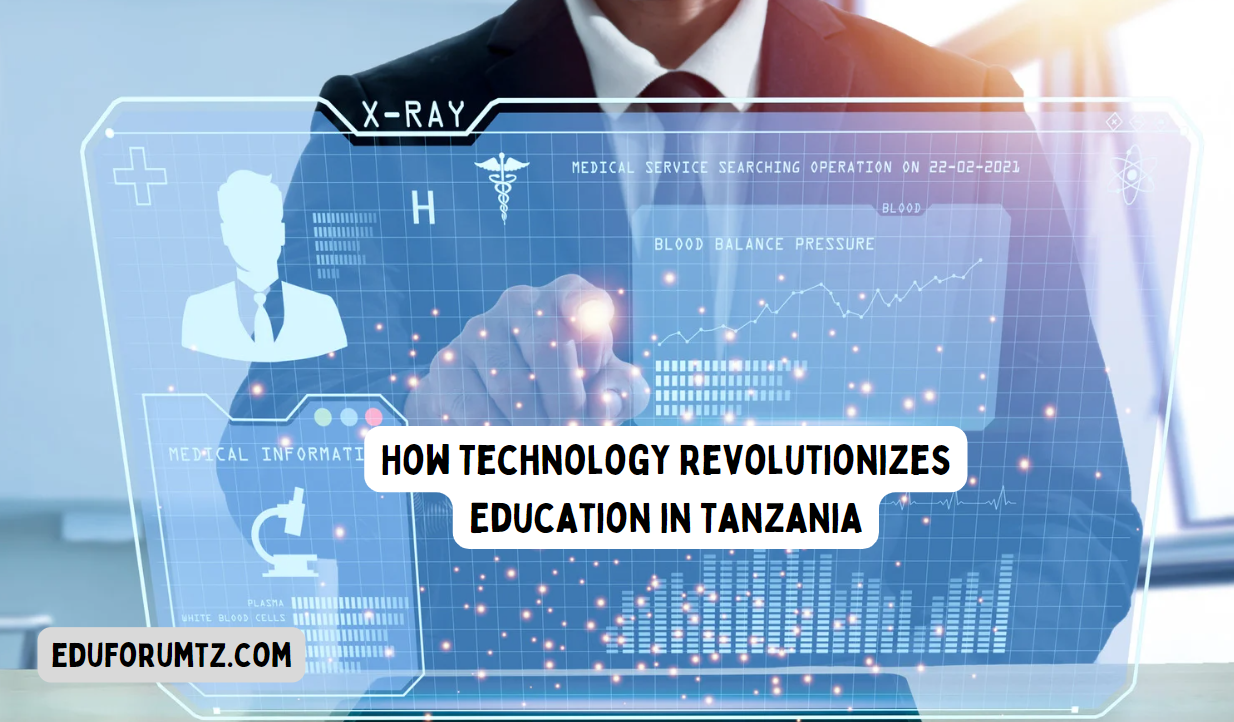
Technology is rapidly transforming the way education is delivered in Tanzania. With the increasing availability of digital devices and internet connectivity, students and teachers are now able to access a wealth of educational resources and tools that were previously out of reach. This has opened up new opportunities for learning and collaboration, and is helping to bridge the gap between urban and rural areas.
One of the key ways that technology is revolutionizing education in Tanzania is through the use of digital learning platforms. These platforms provide students with access to interactive and engaging learning materials, which can be accessed from anywhere with an internet connection. They also allow teachers to track student progress and provide personalized feedback, helping to ensure that every student receives the support they need to succeed.
Another way that technology is transforming education in Tanzania is through the use of mobile devices. Many schools are now using tablets and smartphones to deliver educational content, which has proven to be particularly effective in rural areas where access to traditional classrooms and textbooks is limited. By providing students with access to digital devices and educational content, technology is helping to level the playing field and ensure that every student has the opportunity to learn and succeed.
The Current State of Education in Tanzania
Tanzania has made significant progress in expanding access to education in recent years. According to a report by UNESCO, the net enrollment rate in primary education in Tanzania increased from 79% in 2009 to 86% in 2018. However, despite this progress, challenges still remain in ensuring that all children have access to quality education.
One of the major challenges facing Tanzania’s education system is the shortage of qualified teachers. According to a report by the World Bank, Tanzania has one of the lowest ratios of qualified teachers to students in sub-Saharan Africa. This shortage of teachers has a significant impact on the quality of education that students receive.
Another challenge facing Tanzania’s education system is the lack of access to technology and digital resources. While there have been efforts to introduce technology in schools, many schools in Tanzania still lack basic infrastructure such as electricity and internet connectivity. This makes it difficult for teachers and students to access digital resources and take advantage of the benefits of technology in education.
In addition to these challenges, there are also issues with the quality of education that students receive. According to a report by the Tanzania Education Network, many students in Tanzania lack basic literacy and numeracy skills. This is partly due to the shortage of qualified teachers and the lack of access to quality learning resources.

How Technology Revolutionizes Education in Tanzania
Despite these challenges, there are also many opportunities for improvement in Tanzania’s system. The government has made a commitment to increasing investment in education, and there are also many non-governmental organizations and international partners working to support education in Tanzania. With the right investments and support, Tanzania has the potential to transform its education system and provide quality education for all children.
How Technology is Entering the Tanzanian Education System
Tanzania is one of the countries in Africa that is embracing technology in its education system. The Tanzanian government has been working towards integrating technology into the education sector to improve access to quality education. The country has been investing in digital infrastructure to support e-learning and other technological advancements in the education sector.
Digitalization in Teaching and Education
The government has implemented policies and initiatives to support the use of technology for teaching and learning in Tanzania. According to a report by the International Labour Organization, existing policies and frameworks support the use of technology in the education sector. However, additional efforts are needed to integrate technology fully.
Tech-supported, School-based TPD Model
One of the initiatives that the Tanzanian government has implemented is the Tech-supported, School-based TPD (Teacher Professional Development) Model. This model aims to improve the quality of teaching in the country through the use of technology. According to the EdTech Hub, ongoing research is being conducted to evaluate the impact of this model on learning outcomes in Tanzania.
Digital Learning Initiatives
Tanzania has also implemented various digital learning initiatives to improve access to quality education. According to a study on ICT in Education, mapping digital learning initiatives in Tanzania, the country has implemented various initiatives such as the One Laptop per Child (OLPC) program, which aims to provide every child with a laptop to enhance their learning experience.
Impact of COVID-19
The COVID-19 pandemic has accelerated the adoption of technology in the Tanzanian education system. According to a report by the International Labour Organization, the Tanzanian government established a team of various stakeholders to conduct a survey on the impact of the pandemic on the education sector. The findings of this survey will inform future plans in the education sector.
In conclusion, Tanzania is making significant strides towards integrating technology into its education system. The government has implemented policies and initiatives to support the use of technology for teaching and learning in the country. The ongoing research on the Tech-supported, School-based TPD Model and the various digital learning initiatives being implemented are expected to improve access to quality education in Tanzania.
Impact of Technology on Teaching Methods
Technology has significantly revolutionized teaching methods in Tanzania. The use of technology in classrooms has made it easier for teachers to deliver quality education to students. This section will explore the impact of technology on teaching methods in Tanzania, with a focus on online learning platforms and interactive educational software.
Online Learning Platforms
Online learning platforms have become popular in Tanzania due to their ability to provide flexible and accessible education. These platforms allow students to access educational materials from anywhere, at any time. They also enable teachers to create and share educational content with their students, making it easier to deliver quality education.
One example of an online learning platform used in Tanzania is the Tanzania Education Network (TENET). TENET is an e-learning platform that provides access to educational resources for students and teachers in Tanzania. The platform offers a range of educational materials, including videos, podcasts, and quizzes, that can be accessed from anywhere with an internet connection.
Interactive Educational Software
Interactive educational software has also had a significant impact on teaching methods in Tanzania. This software allows teachers to create interactive and engaging educational content, making it easier for students to learn and retain information. It also enables teachers to track students’ progress and provide personalized feedback.
One example of interactive educational software used in Tanzania is the Kio Kit. The Kio Kit is a portable, solar-powered computer lab that provides access to educational content for students in rural areas. The kit includes tablets pre-loaded with educational software, making it easier for teachers to deliver quality education in areas with limited resources.
In conclusion, technology has had a significant impact on teaching methods in Tanzania. The use of online learning platforms and interactive educational software has made it easier for teachers to deliver quality education to students. As technology continues to evolve, we will likely see even more innovative ways to use technology to improve education in Tanzania.
Impact on Students’ Learning Experience
Technology has had a significant impact on the learning experience of students in Tanzania. Here are some of how technology has revolutionized education in Tanzania:
Improved Accessibility
One of the most significant benefits of technology in education is improved accessibility. With digital learning tools, students can access educational resources from anywhere, at any time. This means that students who live in remote areas or have limited access to educational resources can now access high-quality education.
Tablet-based learning programs have been particularly effective in improving accessibility. For example, Quest Forward Learning has been successful in providing students with access to educational resources even in areas with limited internet connectivity. This has helped to bridge the gap in educational opportunities between urban and rural areas in Tanzania.
Enhanced Engagement
Technology has also enhanced student engagement in the learning process. Digital learning tools, such as interactive whiteboards, tablets, and educational apps, provide students with a more engaging and interactive learning experience. This helps to keep students interested and motivated in their studies.
Furthermore, technology has enabled teachers to create more engaging and interactive lesson plans. For example, teachers can use educational videos, animations, and simulations to help students understand complex concepts more easily.
Personalized Learning
Finally, technology has enabled personalized learning. With digital learning tools, teachers can tailor their lesson plans to meet the individual needs of each student. This means that students can learn at their own pace and in a way that suits their learning style.
For example, adaptive learning software can adjust the difficulty level of questions based on a student’s performance. This helps to ensure that students are challenged but not overwhelmed by the material.
In conclusion, technology has had a significant impact on the learning experience of students in Tanzania. Improved accessibility, enhanced engagement, and personalized learning are just a few of how technology has revolutionized education in Tanzania.
Challenges and Solutions
Digital Divide
One of the biggest challenges facing the integration of technology in Tanzanian classrooms is the digital divide. Many schools in rural areas lack access to basic technology infrastructure, such as computers and internet connectivity. This makes it difficult for students to access digital learning resources and for teachers to incorporate digital tools into their lessons.
To overcome this challenge, the Tanzanian government has launched several initiatives to increase access to technology in rural areas. For example, the government has partnered with private companies to provide low-cost laptops and tablets to schools in remote areas. Additionally, the government has launched a program to provide internet connectivity to schools across the country.
Infrastructure Issues
Another challenge facing the integration of technology in Tanzanian classrooms is infrastructure issues. Many schools lack basic infrastructure, such as reliable electricity and physical space for computer labs. This can make it difficult to implement digital learning programs and provide students with access to technology.
To address this challenge, the Tanzanian government has launched several initiatives to improve school infrastructure. For example, the government has invested in solar power systems to provide reliable electricity to schools in rural areas. Additionally, the government has launched a program to build new classrooms and computer labs in schools across the country.
Training and Support for Teachers
A key challenge facing the integration of technology in Tanzanian classrooms is the lack of training and support for teachers. Many teachers lack the skills and knowledge necessary to effectively incorporate technology into their lessons. This can make it difficult for students to benefit from digital learning resources and tools.
To address this challenge, the Tanzanian government has launched several initiatives to provide training and support for teachers. For example, the government has partnered with NGOs and private companies to provide training programs for teachers on how to effectively use technology in the classroom. Additionally, the government has launched a program to provide ongoing support and resources to teachers as they integrate technology into their lessons.
Future Prospects of Technology in Tanzanian Education
As technology continues to advance, the prospects of technology in Tanzanian education are promising. With the right investments and policies, technology can help to bridge the education gap and improve the quality of education in Tanzania.
One of the most significant prospects for technology in Tanzanian education is the ability to reach more students in remote areas. Tanzania is a large country with many rural areas where access to education is limited. However, with the use of technology such as online learning platforms, video conferencing, and mobile devices, students in remote areas can access quality education. This will not only improve the quality of education but also increase the number of students who can access it.
Another promising prospect for technology in Tanzanian education is the ability to personalize learning. With the use of artificial intelligence and machine learning, it is possible to create personalized learning experiences for students. This means that students can learn at their own pace and in a way that suits their learning style. This will improve the quality of education by ensuring that each student receives the support they need to reach their full potential.
Furthermore, technology can help to improve the quality of teaching in Tanzania. With the use of technology such as virtual reality and gamification, teachers can create engaging and interactive lessons that capture the attention of students. This will not only improve the quality of teaching but also make learning more fun and enjoyable for students.
In conclusion, the prospects of technology in Tanzanian education are promising. By investing in the right technology and policies, Tanzania can improve the quality of education and reach more students in remote areas. Technology can also personalize learning and improve the quality of teaching, making education more engaging and enjoyable for students.
Frequently Asked Questions
What are the most significant ways technology is changing education in Tanzania?
Technology is changing education in Tanzania in several significant ways. One of the most notable ways is the increased access to educational resources and tools. With the use of technology, students and teachers can access a wealth of information and learning materials from anywhere, at any time. Additionally, technology is helping to make learning more interactive and engaging, with the use of multimedia resources and interactive tools.
How are teachers adapting to the use of technology in Tanzanian classrooms?
Teachers in Tanzanian classrooms are adapting to the use of technology in various ways. Some are embracing the use of technology and incorporating it into their teaching methods, while others are still learning how to use technology effectively. The government and other organizations are providing training and support to help teachers adapt to the use of technology in the classroom.
What challenges do Tanzanian schools face in implementing technology in education?
Tanzanian schools face several challenges in implementing technology in education. One of the biggest challenges is the lack of infrastructure and resources, particularly in rural areas. Additionally, there is a lack of skilled personnel to support the use of technology in education. Finally, there is a need for more funding to support the purchase and maintenance of technology equipment.
What are some successful examples of technology integration in Tanzanian education?
There are several successful examples of technology integration in Tanzanian education. For example, the Ubongo Kids television program uses edutainment to teach children math and science concepts. Another example is the use of mobile phones to deliver educational content to students in rural areas. Additionally, some schools are using learning management systems to organize and deliver educational content.
How can technology be used to improve access to education in rural areas of Tanzania?
Technology can be used to improve access to education in rural areas of Tanzania in several ways. For example, mobile phones can be used to deliver educational content to students who do not have access to traditional classrooms. Additionally, online learning resources can be used to supplement classroom learning and provide students with additional resources and support.
What role does the Tanzanian government play in promoting technology in education?
The Tanzanian government plays a significant role in promoting technology in education. The government has launched several initiatives to support the use of technology in education, including the National ICT Policy and the Basic Education Master Plan. Additionally, the government is working to improve infrastructure and provide training and support to teachers to help them effectively use technology in the classroom.
Also Read:

